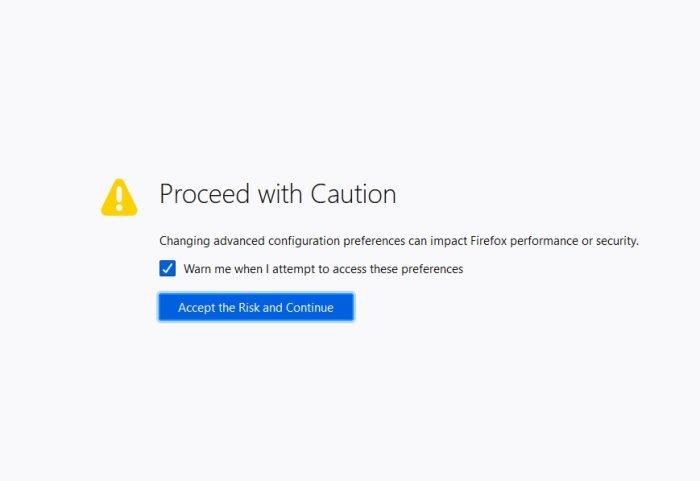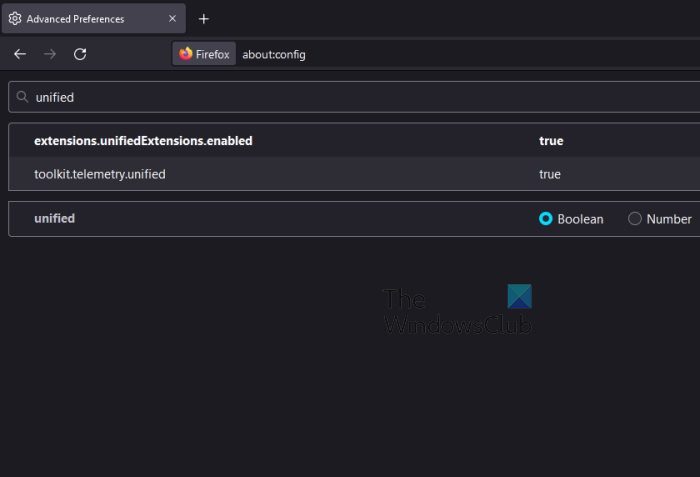From time to time, the folks at Mozilla release a new version of Firefox with one or more hidden features. Firefox now comes with the ability to add a dedicated Extensions menu button to the toolbar, one that is similar to that of Microsoft Edge and Google Chrome.

Now, this button is disabled by default, and there is no way to enable it via the typical Settings menu because it’s not there. We will have to go into the about:config section to turn it on, and that’s easily done so do not worry about it. Bear in mind that this is a test right now and at any time Mozilla could remove it. Still, we believe it will stay since both Chrome and Edge have incorporated it already, and we doubt Mozilla would want Firefox to miss out.
How to enable the extension button in Firefox
Before we can use the extension button on the Firefox toolbar, it must first be enabled. Luckily, this isn’t a difficult affair and can be accomplished in less than a minute.
- Open Mozilla Firefox
- Navigate to Advanced Preferences
- Go to extensions.unifiedExtensions.enabled
- Click the toggle button and reboot Firefox
1] Open Mozilla Firefox
If you are not fully certain how to launch Mozilla Firefox, then let us explain.
- Look for the shortcut on the desktop, then select it.
- Check if there is a Firefox shortcut on the Taskbar, or the app’s library and launch it from there.
If everything goes according to plan, Firefox should now be opened on your computer.
2] Navigate to Advanced Preferences

The next step here is to find your way to the Advanced Preferences section in Firefox. We cannot get there via the Settings area, so follow closely.
- Type about:config in the address bar.
- Hit the Enter key.
- You will see a button called, Accept the Risk and Continue.
- Click on it promptly.
You’ll now be brought to the Advanced Preferences hidden area.
3] Go to extensions.unifiedExtensions.enabled

Moving along, we must locate extensions.unifiedExtensions.enabled via the Advanced Preferences section.
- Click in the Search Preferences Name box,
- From there, type Unified in the box.
The page must look similar to the above image where extensions.unifiedExtensions.enabled is visible.
4] Click the toggle button and reboot Firefox
Now we are going to enable the extension button and reboot the web browser to initiate the change.
- To the far-right of extensions.unifiedExtensions.enabled, double-click the toggle button.
- This should change the value from False to True.
- True means the extension button is enabled, while False means the opposite.
- Close Firefox by clicking on the red X button at the top right.
- Launch the browser again to view the extension button on the toolbar.
Click on the extension button to see a list of all the active extensions currently being used.
How to remove the extension button on Firefox
- If you want to remove the extension button, you will have to go back to about:config and to where you recently enabled the feature.
- Turn extensions.unifiedExtensions.enabled from True to False.
- Restart your web browser, and that’s it, the extension button should now no longer be seen.
READ: How to search open tabs in Edge, Chrome, Firefox, Opera browsers
Where is the extension icon in Firefox?
To find Extensions for Mozilla Firefox, you can easily visit the official website at https://addons.mozilla.org/en-US/firefox/extensions/. Alternatively, you can do the following:
- Click the menu button in Firefox.
- Select Add-ons and themes.
- Scroll down and click on Find more add-ons.
You should then be brought to the official extension website.
Are Firefox extensions safe?
Extensions are scanned by Mozilla for threats before they are added to the repository. However, the company is not able to pick up on all threats; therefore, one must not believe extensions are 100 percent safe from infection or not able to trick users into clicking on malicious links.